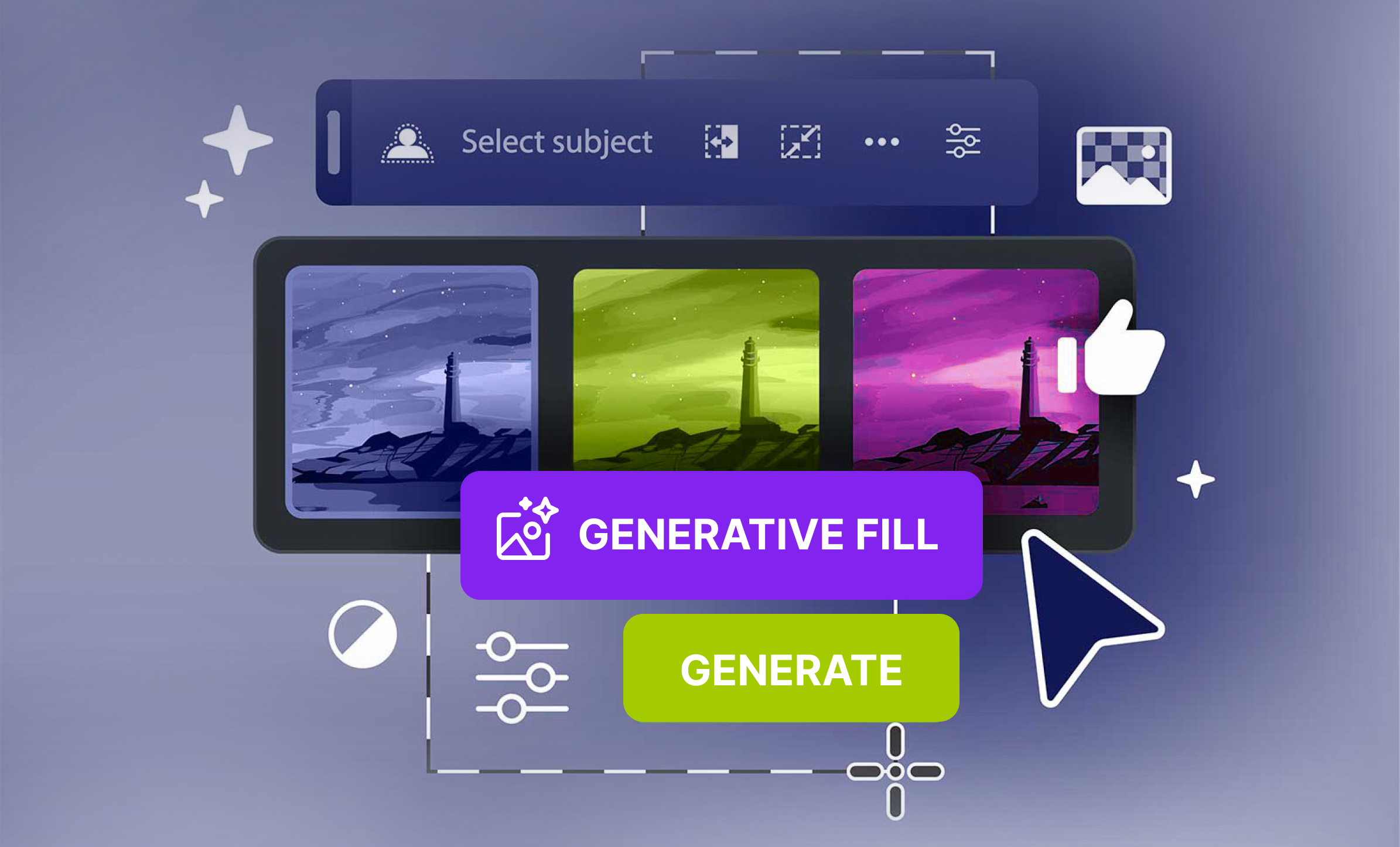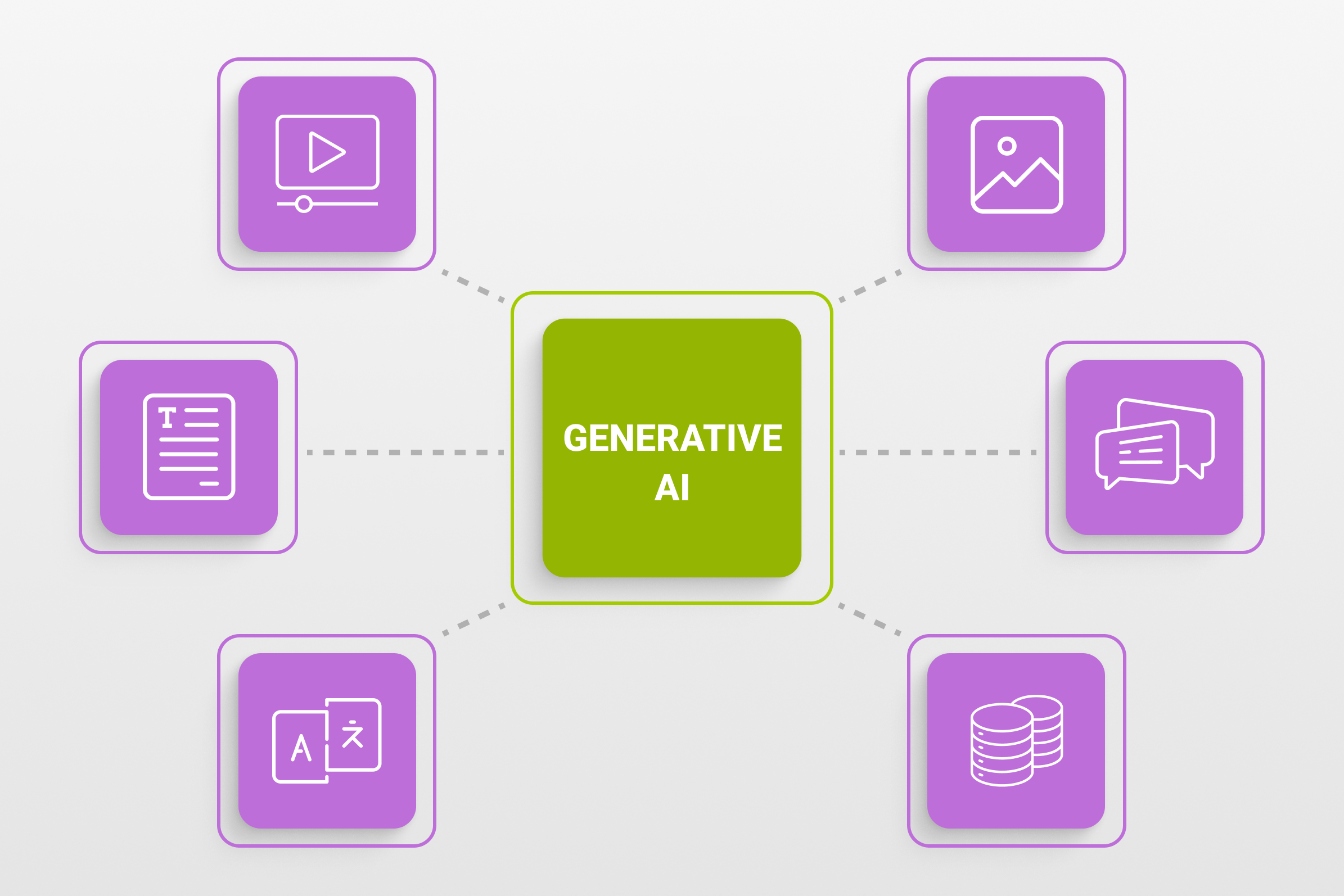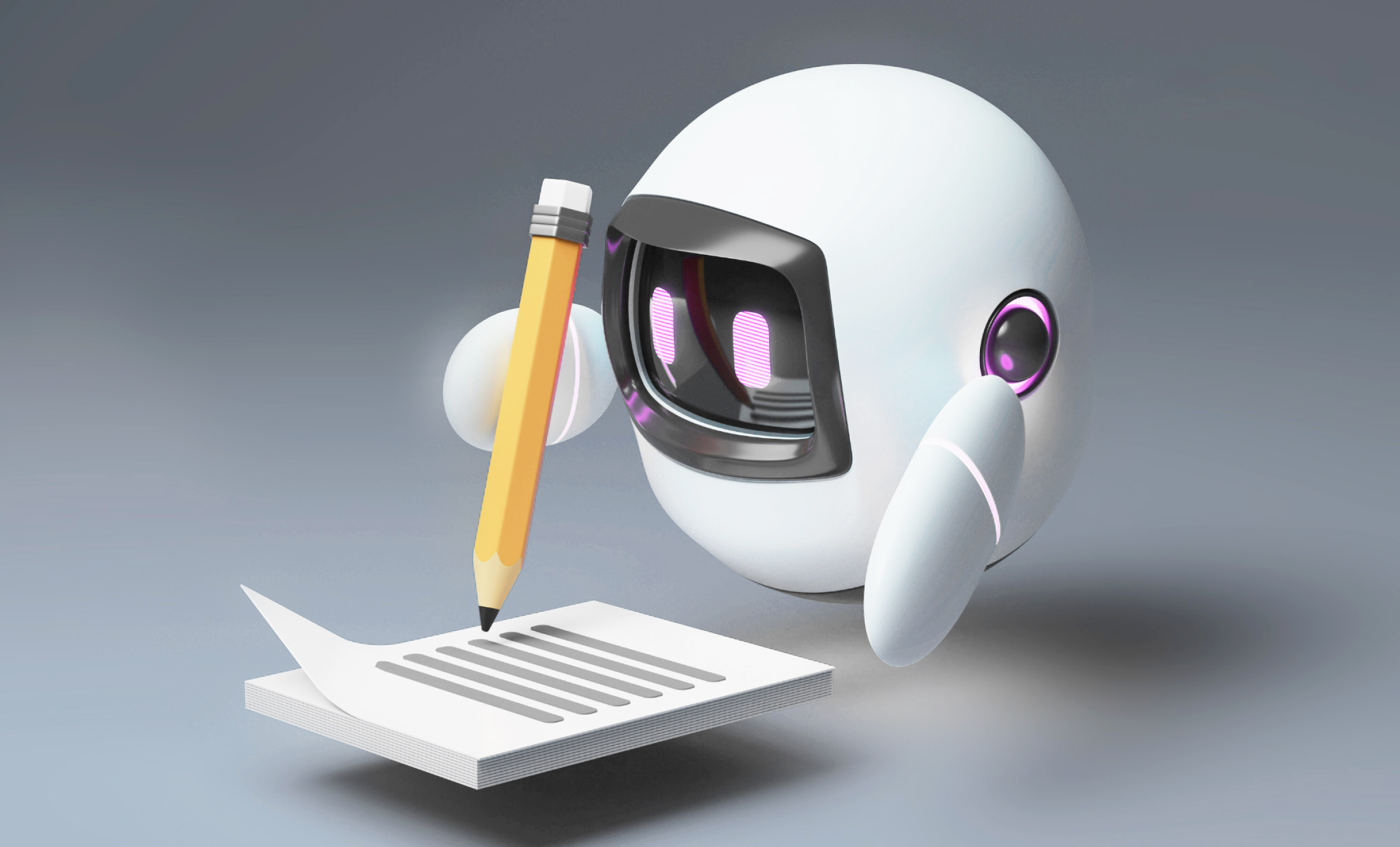Definition of generative AI and its basic operating principles
Published date: 17.07.2024
Read time: 9 min
Generative AI, an emerging form of intelligence, is revolutionizing how we create and engage with content. By utilizing algorithms and extensive data sets generative AI has the ability to produce realistic images, text, music and even entire virtual environments. Its applications span across sectors, from industries to scientific research prсesenting boundless opportunities for innovation and efficiency. As generative AI continues to advance it will undoubtedly reshape aspects of our routines and redefine our perceptions of creativity and originality.
In this article we will talk about what is generative AI and the effect it is сhaving on the business world and the benefits that generative AI services can offer.
Understanding Generative AI

The generative AI meaning is that it represents a category of intelligence that generates content by drawing insights from existing information. Unlike AI models that perform tasks or provide predictions based on input data, generative AI constructs output such as text, imagery, music compositions or intricate simulations. These models leverage methodologies such as networks and deep learning to discern patterns within vast datasets in order to create content that closely resembles human generated work. With its reaching implications across fields, like artistry, entertainment, academia and industry sectors; generative AI facilitates groundbreaking solutions while enhancing the processes involved.
In the next section we will delve deeper and explore how does generative AI work.
How exactly does Generative AI function?

Generative AI utilizes algorithms, neural networks and deep learning to produce fresh content. Key components of AI systems include models such as Generative Adversarial Networks (GANs) and Variational Autoencoders (VAEs). GANs consist of two networks. A generator and a discriminator. Collaborating to generate data. The generator produces data while the discriminator assesses it against data and offers feedback to enhance the generator’s output. This iterative process continues until the generated data closely resembles data.
Alternatively transformer models like OpenAIs GPT (Generative Pre trained Transformer) are commonly used for text generation. These models undergo training on varied text datasets to grasp language patterns, context and meanings. By analyzing billions of sentences they develop the ability to predict and produce contextually relevant text based on the provided input. VAEs operate by encoding input data into a space before decoding it to generate data instances that share similar characteristics with the original dataset. These methodologies enable AI to generate content that’s not just novel but also in line with existing data in terms of context and style unlocking new opportunities across various fields from creative arts, to scientific exploration.
Key Aspects of Creative Artificial Intelligence
Creative AI possesses characteristics that set it apart from forms of artificial intelligence. One of generative AI principles is its capability to generate novel outputs, such as text, images, music and more by leveraging patterns extracted from datasets. This ability is driven by models like GANs, VAEs and transformers which excel at capturing and reproducing the intricacies and nuances in the data they have been trained on. Moreover creative AI systems incorporate feedback mechanisms to facilitate enhancements and refinements in the content they produce. They demonstrate a degree of adaptability. Can fine tune their creations to suit specific contexts or applications effectively rendering them valuable across various industries. Additionally, creative AI exhibits scalability in handling amounts of data while ensuring the generation remains of quality and contextually relevant even with expanding task complexities.
Common Uses of Creative AI
Creative AI finds application in sectors by leveraging its capacity to generate inventive content. Some prevalent generative AI use cases include:
- Content Generation – Creative AI serves as a tool for crafting written materials such as articles, stories and marketing copies. Platforms, like OpenAI’s GPT 3 are capable of generating contextually appropriate text to assist writers and marketers in producing high quality content
- Artistic Creation – In the realm of arts generative AI is capable of crafting paintings, illustrations and complete graphic designs. Artists harness the power of AI tools to generate one of a kind artwork while designers utilize these tools to create logos, advertisements and other visual elements.
- Music and Sound – AI has the ability to compose music, create effects and emulate the styles of specific composers or music genres. This functionality proves valuable, for musicians, producers and game developers seeking to craft tailored audio experiences.
- Gaming and Virtual Realms – Generative AI plays a role in shaping game environments, characters and storylines. It contributes to building worlds that dynamically adjust based on player interactions.
- Healthcare Applications – In the healthcare sector generative AI aids in drug discovery by suggesting structures for new medications. Additionally it supports medical imaging processes by generating images that assist in diagnosing conditions and planning treatments.
Advantages of Leveraging Generative AI
Business’ understanding generative AI delivers advantages across domains by fostering innovation and streamlining operations. Some notable benefits include:
- Boosted Creativity and Innovation – By generating original content generative AI fuels ideas and pushes creative boundaries in fields, like artistry, music creation, writing endeavors and design realms.
- Enhanced Efficiency and Prodсuctivity – By automating content creation generative AI significantly reduces the time and effort needed for tasks, like writing articles, designing graphics and composing music. This allows professionals to concentrate on creative and strategic activities.
- Personalization and Customization – Generative AI can customize content based on preferences and requirements leading to personalized experiences in marketing, entertainment and user engagement. For instance AI can craft tailored marketing messages. Curate music playlists.
- Cost Efficiency – In industries such as film, gaming and advertising generative AI can cut production costs by automating tasks that would otherwise demand labor and resources. This includes creating effects, animations and graphic designs.
- Scalability – Generative AI systems are capable of handling amounts of data and consistently producing high quality results. This makes them well suited for applications requiring repetitive content creation, such as automated news generation or large scale design projects.
Challenges and Limitations of Generative AI
Despite its advantages, generative AI faces challenges. One significant issue is the quality and ethical implications of its output. If the training data is biased AI may produce prejudiced output that spreads misinformation or perpetuates stereotypes.The transparency and clarity of AI decision making pose a hurdle due to the nature of the generative AI models making it challenging to comprehend how a specific result is generated. The potential misuse of AI such as producing deepfakes or other harmful content raises concerns regarding security and privacy. The substantial computational demands and the necessity for training data present obstacles making the development and implementation of generative AI resource intensive. Overcoming these obstacles is crucial for adoption and progression in the realm of AI. It is worth pointing out that there are many types of AI generative and each one can carry its own set of challenges.
Generative AI Can Be Big for Business

In this article we looked at the generative AI definition and some of the benefits it offers businesses.Generative AI models are reshaping creativity and innovation across domains offering possibilities for content generation, customized experiences and increased efficiency. Nonetheless navigating towards unlocking its capabilities comes with hurdles like ethical dilemmas, the call for transparency and the threat of misuse. As we push forward in refining and deploying these technologies, establishing frameworks to ensure their ethical use becomes paramount. By confronting these challenges we can leverage the potential of generative AI to advance society, enhance our lives and open up new horizons of human achievement.




